Reender Kranenborg is a former editor of the magazine Religious Movement in the Netherlands published by the institute of religious studies of the Free University in Amsterdam.

Nieuwleusen is a town in the Dutch province of Overijssel with 9300 inhabitants as of 2021. In the 2001 municipal reform, most of the former municipality of Nieuwleusen was incorporated into the municipality of Dalfsen. Some parts of the former municipality, including the Lichtmis area, was added to the neighbouring municipality of Zwolle.
Herman Nicolaas Ridderbos was a Dutch theologian and biblical scholar. He was an important New Testament theologian, having worked extensively on the history of salvation (Heilsgeschichte) and biblical theology.
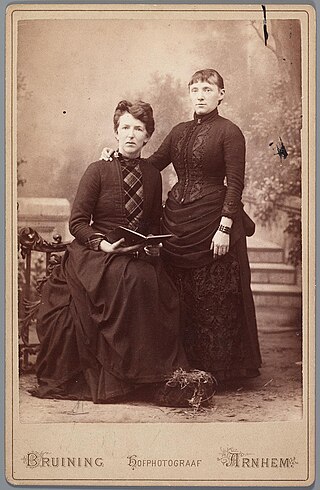
Titia Klasina Elisabeth van der Tuuk, commonly known as Titia van der Tuuk, was a Dutch feminist and socialist. She was born in 't Zandt, Groningen to a preacher and a writer of children's literature. She initially worked as a teacher, but had to give up her profession due to deafness and hostility toward her because she was an avowed atheist. From 1885 onward, she started translating foreign literature into Dutch and writing children's literature and historic novels. She was passionate in her activism for atheism, teetotalism, vegetarianism and pacifism. She often used the pseudonym Vitalis. She was never married and lived openly with her female partner. She died in Zeist, age 84.

Daniël "Daan" de Clercq was a Dutch socialist and activist.
Cornelius Nicolaas Petrus Wessels was a Dutch Jesuit, known for his historical works on the early Catholic Missions in Central Asia, specially Tibet, and in the East Indies.

Simon Berman was the mayor of Kwadijk, Middelie, Warder, Schagen, Bedum, and Alblasserdam in the Netherlands. He was the first mayor of Kwadijk, Middelie, and Warder to actually live in one of those villages. As a popular mayor of Schagen, he handled a double murder case that drew national media attention and advanced a professional school and regional light rail and canals. In Alblasserdam, he addressed the local impacts of World War I. Berman is also known for his association with Christian anarchism.
Jacobus Ruurd "Jaap" Bruijn, was one of the best known and respected Dutch maritime historians. He was professor of maritime history at the University of Leiden from 1979 until his retirement in 2003. During his 41-year teaching career as The Netherlands' only university professor of maritime history, he guided the doctoral theses of no fewer than 49 graduate students.
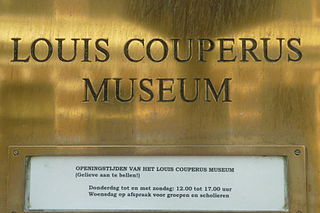
The Louis Couperus Museum is a museum located in the Archipelbuurt neighbourhood of The Hague. The museum celebrates the life and work of the Belle Époque writer Louis Couperus.
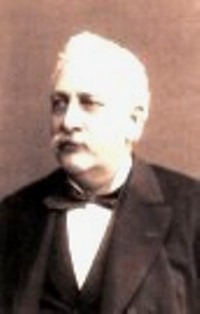
John Ricus Couperus was a Dutch lawyer, member of the Council of Justice in Padang, member of the High Military Court of the Dutch East Indies and the landheer of Tjikopo. He was also the father of the Dutch writer Louis Couperus and knight in the Order of the Netherlands Lion.
Joost Berman was a Dutch lawyer, judge, politician, poet, nonfiction writer, and editor.
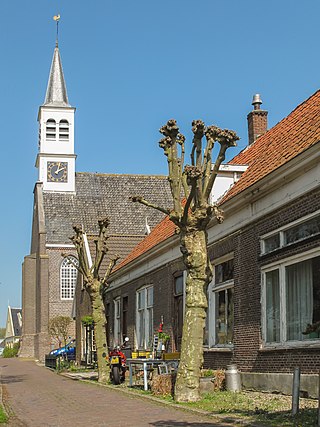
Ds. Alexander Johan Berman was a Dutch Reformed minister of Watergang, an author and, in his early retirement, an archivist. As an author, he wrote mostly literary criticism, and, in his younger years, poetry. He published an anthology with works by authors of his era.
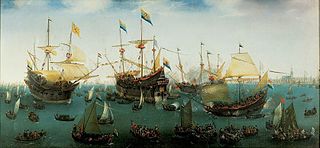
A voorcompagnie (pre-company) is the naming given to the trading companies from the Republic of the Seven United Netherlands that traded in Asia between 1594 and 1602, before they all merged to form the Dutch East India Company (VOC). The pre-companies were financed by merchants from the Northern Netherlands and rich immigrants from the Southern Netherlands. Because of the deadly competition, the government forced the smaller trading companies to unite and form the (United) East India Company, that on its turn received the exclusive rights for the trade with Asia for the following 21 years.

Constant Cornelis Huijsmans was a Dutch art teacher and painter, whose roots go back to the seventeenth-century Antwerp of the landscape painter Cornelis Huysmans (1648–1727). Paintings of the latter are to be found at the Louvre in Paris and at the Hermitage Museum in Saint Petersburg, Russia. Earlier generations of the Huijsmans family used to spell their family name slightly differently, as Huysmans.
2018–19 Eerste Klasse was a Dutch Eerste Klasse association football season of the Eerste Klasse.

Carel Godfried Withuys was a Dutch writer and poet. Much of his work was patriotic in nature, especially during and after the Belgian Revolution of 1830.
Willem Hendrik Velema was a Dutch professor, pastor and theologian. He was a member of the Christian Reformed Churches.

De Vloek was a squatted, self-managed social centre in The Hague, the Netherlands, between 2002 and 2015. Located on Hellingweg 127 in Scheveningen, beside the North Sea, the squat hosted workplaces, living spaces, a venue, and a vegan restaurant. The local council tolerated the occupation until 2014, when it decided to sell the building. A political struggle over the eviction began; some political parties supported the squatters and the Scheveningen Pier was briefly occupied as a protest action. A deal was made for the squatters to move to a former school building and the Vloek was eventually evicted in September 2015.
Librecht Jan Temminck was a Dutch colonial administrator who served both on the Gold Coast and in the Dutch East Indies.
Manon van Raay is a Dutch footballer who plays as midfielder for ADO Den Haag in the Eredivisie.
![Missionaries on Soemba in 1926, l.t.r.: ds. L.P. Krijger, ds. C. de Bruijn, ds. Wiebe van Dijk [nl], ds. J.P. Lambooy, T. Mobach and ds. J.F. Colenbrander ZendelingenOpSoemba.jpg](http://upload.wikimedia.org/wikipedia/commons/thumb/3/36/ZendelingenOpSoemba.jpg/220px-ZendelingenOpSoemba.jpg)













